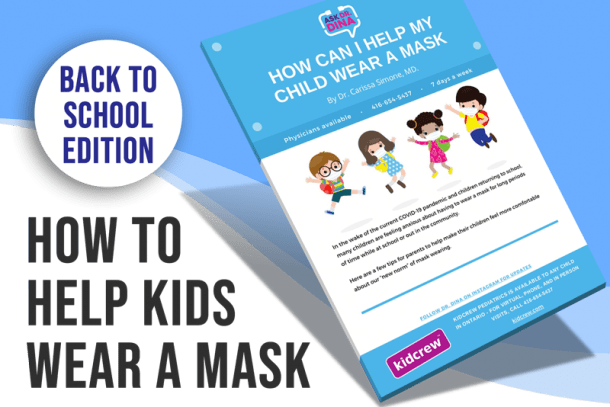Causes of Nightmares and Night Terrors
Nightmares and night terrors are common in young kids. Many kids experience night terrors, but most of them grow out of them. Even though nightmares don’t cause any long-term psychological problems to kids, they can be distressing for parents and children.
What are nightmares in children?
Nightmares, also known as scary dreams, wake children up and leave them fearful and upset.
Nightmares can cause sleep disturbances and difficulty wanting to be alone.
Some key facts about nightmares:
-
More commonly, a nightmare occurs in the second half of the night.
-
As per studies, nightmares are most prevalent in kids between 3 to 6 years.
-
Roughly half of the kids of this age period report frequent nightmares.
-
Most of the kids outgrow their scary dreams eventually.
-
With nightmares, children may have difficulty falling asleep back.
-
Nightmares are more common for children who have very active imaginations.
-
Sleep talking can be a result of a sleep terror.
Most children can be reassured rather quickly, enabling them to go back to sleep.
Causes of nightmares
The exact causes of nightmares in children are unknown. But the more likely reason is any of the following:
-
Your kid is experiencing some stress or is overtired.
-
Kids who have gone through some traumatic situation may experience frequent nightmares.
-
Some medications can lead to disturbing dreams.
-
Kids who have an irregular sleeping routine or not getting enough sleep are also at increased risk of having nightmares.
-
Nightmares may also be associated with fevers, illness, or developmental delay.
-
There is no gender-specific difference in who has nightmares.
-
A sleep disorder such as sleep apnea (particularly obstructive sleep apnea).
Important note:
Some psychological and genetic factors can also cause nightmares in kids. For example, approximately 7% of kids having nightmares have a family history of nightmares.
Ways to manage nightmares effectively.
Is your kid experiencing nightmares? Here are some essential things that you can do to manage nightmares quickly:
-
Make sure to reassure your child that everything is fine as soon as possible.
-
Soothe your child, whether kissing them on the forehead or cuddling with them to ensure comfort.
-
Having a night light in your room can provide comfort. Try for a red nightlight, as others can lead to poor sleep with blue light.
-
Setting a sleep schedule and bedtime routine so they are more sleepy when bedtime comes.
-
Consider keeping a sleep diary to identify any triggers or patterns.
Pro trick for nightmares
If your kid isn’t reassured or soothed with ease, then you have to develop a personal trick to make them believe that the monster or other scary object or person has gone. For this, you can create a ‘monster spray’ by filling water in a spray bottle and letting your child spray the room with that.
How to prevent nightmares in your children?
To prevent nightmares:
-
Avoid frightening shows and experiences. Children more often develop stress and anxiety from what they see on screens or experience in their homes.
-
Turn the screen off about 2 hours before their sleep time. It may help mitigate this problem.
-
Develop a consistent and predictable sleeping routine for your kids.
Night terrors in toddlers are different.
Night terrors in toddlers and children are a different situation than nightmares. These usually occur when your kid is half woken during the transition from deep to light sleep.
Key facts about night terrors:
-
Night terrors are common among kids between 2 to 4 years.
-
Night terrors occur most often during the 1st or second hour after falling asleep. Night terrors tend to happen around the same time each night.
-
Some kids may experience a night terror early in the morning, just before waking up.
-
Sometimes the night terror episode can persist for many minutes, and the situation can frighten parents. Kids do not know they are experiencing a night terror.
-
Commonly, children go back to sleep once the night terror episode is over. Usually, children do not even remember the episode when asked in the morning.
-
As with nightmares, there is no gender-specific difference in who has night terrors.
-
Some kids experience night terrors each night, and some only have one once in a while, or once ever.
Important note on night terrors:
When your child is experiencing a night terror, they may look frightened, pale, and sweaty. Your child may open their eyes wide and scream during a night terror. Most often, children experiencing a night terror are not responsive to their parents or caretakers.
Causes of night terrors
The following can be triggers for night terrors in toddlers:
-
A full bladder
-
Poor quality of sleep or a delayed bedtime
-
Fatigue or stress
-
Loud noise
In some cases, we see a family history of sleep disorders in children who develop night terrors.
Best ways to manage night terrors in toddlers
Here are some of the best and most effective ways to deal with night terrors:
-
Do not wake your children up when they are experiencing a night terror episode. Waking your child in the middle of a night terror can lengthen or worsen the situation of terror.
-
Avoid discussing your child’s situation with them the next day because they will not remember the condition, leading to more fear and anxiety.
-
In some cases, altering the sleep cycle of your child can help in preventing further night terrors.
Pro Tips for night terrors
If your child is experiencing a night terror episode at the same time daily, then consider waking them up 30 to 60 minutes before that time. Do this for a week and track the change. This often ends the process of night terrors.
Ensure your child gets enough sleep at night. Minimize screen time and caffeine consumption before bedtime.
Final thoughts:
Nightmares and night terrors in toddlers are common and usually self-limited. The highest prevalence is among young children, and they typically decrease with age.
Often, nightmares and night terrors are relatively preventable by ensuring your child gets enough sleep and minimizes screen time before bed. If your child has a nightmare, it is best to comfort them and bring them back to sleep, while waking your child with night terrors before they usually have the episode can help break the cycle.
FAQ – Frequently Asked Questions
Can children get hurt during a night terror?
Night terrors can be a very upsetting experience for parents, who might feel helpless when they don’t know how to calm down their child. But, of course, the best way is to wait patiently and never get hurt from thrashing around in bed if your kid starts having one of these scary dreams with nighttime awakenings!
Do sleep terrors occur during deep sleep?
Night terrors are a type of nightmare that can happen at any time during deep non-REM sleep. In this case, the person is having visions and may also have dangerous behaviors as they’re not aware of what’s happening around them or themselves because their brain isn’t fully awake yet.
Does restless legs syndrome affect a child’s night terrors?
Restless legs syndrome is a neurological sleep disorder that causes uncomfortable feelings and the urge to move your legs. Restless legs can make it difficult for people to try to get comfortable enough to fall asleep.
Do night terrors go away on their own?
Most kids who experience night terrors grow out of them. Many kids with night terrors no longer have sleep terrors after the age of 6-7. However, as young children, some kids who suffer from night terrors will have other sleep disorders such as sleep apnea as they get older.
Dina is a wife, mother of 4, and adrenaline junky. She loves to share children’s health information from her professional and personal experience. More About Dr Dina.















